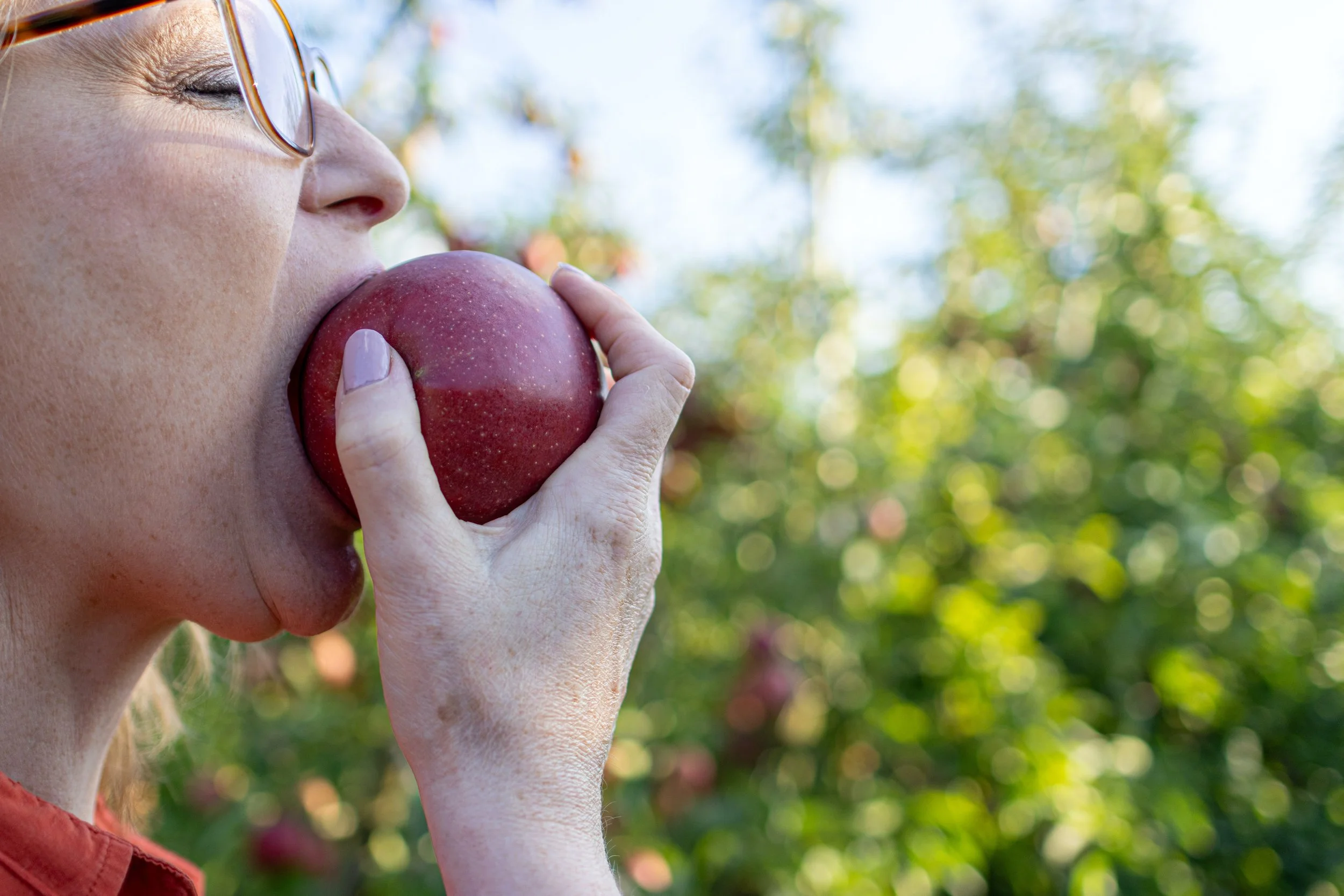Improve Your Well-being With Mindfulness Meditation
IMPROVE YOUR WELL-BEING WITH MINDFULNESS MEDITATION
Mindfulness practice is an evidence-based method to harness the power of your mind so that it works for you, not against you. And the best thing about it? It's the easiest type of meditation to learn and one of the most powerful for improving mental health.
I've been practicing mindfulness for many years. It's not the first type of meditation that I learnt but it is my favourite. I love it so much that I became a Mindfulness-Based Stress Reduction teacher. I now think of it as a superpower because it’s been transformational in my life.
WHAT IS MINDFULNESS?
Mindfulness is the state of being aware. It's that simple. It's about being aware in the present moment. Aware of your surroundings and your environment. Aware of yourself, your thoughts, your feelings, and your own body sensations. It's even about being aware that you are aware.
And where does all this awareness get us? What's the point of it? I hear you ask.
WHAT IS MINDFULNESS GOOD FOR?
There are so many benefits of mindfulness. That's the beauty of developing a mindful mindset. It will have a positive effect on every area of your life. From your interpersonal relationships, communication style, behavior habits, work life, learning and studying, and self-awareness to mental well-being, physical health, lifestyle choices, and chronic pain problems.
Mindfulness meditation is literally a superpower. Research has shown that people who meditate have faster and more accurate perceptions than non-meditators.
HOW DOES MINDFULNESS IMPROVE MENTAL HEALTH?
And if that's not enough, mindfulness is a powerful tool for helping with common mental health problems and psychological symptoms. Research has shown that it can reduce stress, depression and anxiety symptoms, ADHD, and mood disorders. What's more, when mindfulness is combined with other practices, it can help alleviate addictions.
It's not just preventative. At the same time, practicing mindfulness helps us to savor the wonderful things in life and feel more gratitude. Gratitude is a marker for well-being and an important aspect of positive psychology. All in all, we have a better relationship with ourselves and our lives.
It's also been known to help improve self-compassion, so it is an important part of our self-care plan.
HOW TO PRACTICE MINDFULNESS
Considering mindfulness is simply having awareness in the present moment, there are many ways we can practice mindfulness and develop mindfulness as a skill. Eastern traditions such as yoga, tai chi, and breathwork all encourage the mind to slow down and focus on the present moment, so these practices can help.
And then we have mindfulness practices like body scan that are specifically developed to help us train our brains to be more interoceptively aware. The key to practising mindfulness is being aware without judgment. For example, when our mind wanders, we bring it back without judgment. In this way, mindfulness helps us to observe without judgment or commentary, improving mental health, well-being, body awareness, and self-compassion.
THE TWO TYPES OF MINDFULNESS PRACTICE
The two types of mindfulness practice that specifically work on training the brain to be mindful are formal mindfulness meditation practice and informal mindfulness practice.
Formal mindfulness meditation practice
Formal meditation is a practice that involves setting aside time to practice mindfulness meditation. This is where you take time out of your day to practice. You may sit down in any posture that is comfortable or lie down for body scan.
In a sitting meditation, you can either listen to a guided meditation or go freestyle. The objective is to remain focused on what is arising in the moment. You may choose to focus on something specific, such as your breath moving, what you can hear, or what thoughts and feelings arise. Or you can choose open awareness, where you are aware of everything that arises.
The easiest way to do a body scan practice is by listening to an audio. You can find them on meditation apps and if you do a Mindfulness Meditation Course.
Informal mindfulness practices
Informal mindfulness meditation practice is a simple practice where you incorporate mindfulness into your everyday activities. There are many mindfulness exercises to get you started, such as mindfulness eating, mindfulness walking, and mindfulness exercises. Again, you can find these on meditation apps, or you will be given them during a Mindfulness Meditation Course.
LEARNING MINDFULNESS FOR MENTAL WELL-BEING
Many people today ask me about meditation apps and while they have their place, they are not a replacement for proper support and guidance in learning meditation. I highly recommend enrolling on a mindfulness course. While you can find them online, I find that they are much more effective in person. Usually taught in groups of about 6 -10 students. You have the power of the group, the accountability and the support all working in your favour. There are two courses available.
Mindfulness-Based Stress Reduction (MBSR)
There are two main mindfulness meditation courses or mindfulness interventions, as they are sometimes called. The Mindfulness-Based Stress Reduction course is an 8-week course (2-3 hours per week) that combines mindfulness and psychology to help you with stress reduction, depression, anxiety, mood disorders, ADHD, insomnia, and pain. This course is widely available in most cities in the West. This is what I teach. It's a powerful course and can help you transform the way you interact with yourself, your life, and those around you. It is a powerful and fast personal development course.
Mindfulness-Based Cognitive Therapy (MBCT)
The other mindfulness meditation course is Mindfulness-Based Cognitive Therapy (MBCT) which is also 8 weeks. This course incorporates cognitive therapy with mindfulness meditation. It is particularly good at addressing cravings, addiction, recurrent depression, and substance abuse and therefore helps to prevent relapse.
MINDFULNESS EXERCISES
Before you sign up for an 8-week mindfulness course, you might want to give mindfulness a little go to see what it's all about. If you can find audio exercises, these are better. But if not, why not try right now? Below, you'll find instructions for mindful seeing exercise. Just read the steps and have a go. It's better if you have a window you can look out of for this exercise.
Find a comfortable place to sit where you can see outside.
For the next few minutes, just observe what you can see. Whatever your eyes perceive, don't give it a label in your mind, just watch. So instead of noting that you're looking at a lamp post, notice the color of it, the tallness and slenderness of it, and the shape of the lamp.
Allow your eyes to do the work, not your mind. If you notice thoughts popping into your head, judgments, questions, complaints, or resistance, try to refocus from thoughts to what you can see. Gently bring yourself back to the task of seeing.
Become aware of any movement, perhaps the leaves are jostling in the wind, or perhaps there are people. Notice movement again without judgment or commentary. Stay focused on being aware but not engaged.
If you notice you've moved into mind wandering, bring your attention to the present moment again without reprimand or judgment. Just continue being aware of all that is in your visual awareness.
THE ESSENCE OF MINDFULNESS PRACTICE
The essence of mindfulness exercises is awareness of what is arising in any given moment without judgment. Paying attention to the things that arise. This can be your thoughts and feelings, bodily sensations, other people, sounds, smells, and other outside stimuli that your senses pick up. Being fully present to what is in the moment is what mindfulness is all about.
COGNITIVE PATTERNS, MIND HABITS, AND MENTAL HEALTH PROBLEMS
In contrast, without meditation practice, we are rarely in the moment. Our thoughts tend to reside in the past or the future. Where do your thoughts go habitually? Are you a past or future kind of person? If you find you're mostly in the past, you may suffer from the accompanying feelings of guilt, shame and regret. If, on the other hand, you find your thoughts tend to go towards the future, you may find that you suffer from anxiety symptoms, overwhelm, and exhaustion.
And perhaps you're not sure because you haven't spent much time noticing your thoughts.
With regular practice, you'll start to notice that you have a busy mind and what kind of thoughts you have. Meditation is all about slowing down the busy mind. Each time your mind wanders, you bring it back to the task at hand. In doing mindfulness work this way, we train the brain. We become the masters of our minds, not the slaves. This has a direct effect on our mental health.
MINDFULNESS EXERCISES AND YOUR BRAIN
Mindfulness and meditation practice change your brain. Research has shown that the Default Mode Network (DMN), which is the part of your brain that is busy when you're not using your cognitive brain, is overactive in people who suffer from anxiety and depression and underactive in advanced meditators. That means that the more you practice mindfulness, the less likely you are to suffer anxiety and depression. By practicing mindfulness, we become the masters of our minds. We choose our thoughts. This reduces both physical and psychological symptoms.
WHAT IS THE DIFFERENCE BETWEEN MINDFULNESS AND MEDITATION?
Mindfulness is a meditation technique; it's a type of meditation. The term meditation is an umbrella term for many, many different types of exercises that train the mind to focus with the intention of reaching an empty mind. Although we use meditation to describe mindfulness techniques, meditation is a state of mind where the mind is empty. In other words, mindfulness is a tool. Meditation is a state of mind.
Many people tell me they tried meditation, but they can't empty their minds. They seem disappointed, but they’re expecting to see a result that, in reality, takes many hours of practice. Each time we practice we train the mind, we harness the power of the mind and become its master. Eventually, we transcend the mind chatter and use the mind more for what it was intended; creative and cognitive expression. The more we practice the more we can enter into the meditative state at will. The meditative state is where we find self-transcendence, a pillar of transpersonal psychology and a determinant of well-being.
HOW MINDFULNESS HELPED ME
Before becoming a Mindfulness-Based Stress Reduction Teacher, I had practised many different types of meditation. I then discovered mindfulness and enrolled on an 8-week course. Being a psychologist, I loved the fact that the MBSR course incorporated wisdom and teachings from the Eastern Philosophies, in other words, meditation, and wisdom and teaching from the West, in other words, psychology. This is a powerful combination that will change anyone's life. I immediately saw the value in what I was learning, did the homework, applied the teachings to my everyday life, and then enrolled on the next course. When I find something good, I can't get enough of it, and I immerse myself in it.
My mindfulness practice made me the master of my mind. For several years I vigilantly observed the contents of my mind. It was a fascinating study, which brought up all kinds of revelations about me and my behavior (which ultimately comes from our thoughts), my negative patterns, and my inner saboteur. I can not tell you how life-changing that process was. I can tell you that I attribute my two-year mystical experience to this intense mindfulness study. My mystical enlightening experience happened on the back of my vigilant mindfulness exploration.
INSIGHT HIGHLIGHTS
I can't make promises of mystical experiences, but I can assure you that learning to develop mindfulness will serve you for the rest of your life. The more you practice, the more results you'll see. The more you practice, the quieter your mind will become, and in that stillness lies inner peace and well-being.
Thanks for reading, and as always, keep striving for growth and well-being, and never settle for less!
How I Can Help
I hope you found this blog post helpful and inspiring. If you have any questions or need further guidance, please don't hesitate to reach out. As someone who’s deeply passionate about well-being and personal growth and development, I offer services designed to help you cultivate a life you love. Whether through one-on-one sessions, workshops, or online resources, I’m here to support your journey towards becoming the best version of yourself.
Here’s to your well-being, personal growth and success!
Head over to the services section on my website for more information on how we can work together to achieve your goals. I work online and face to face on the Côte d’Azur, in France.





